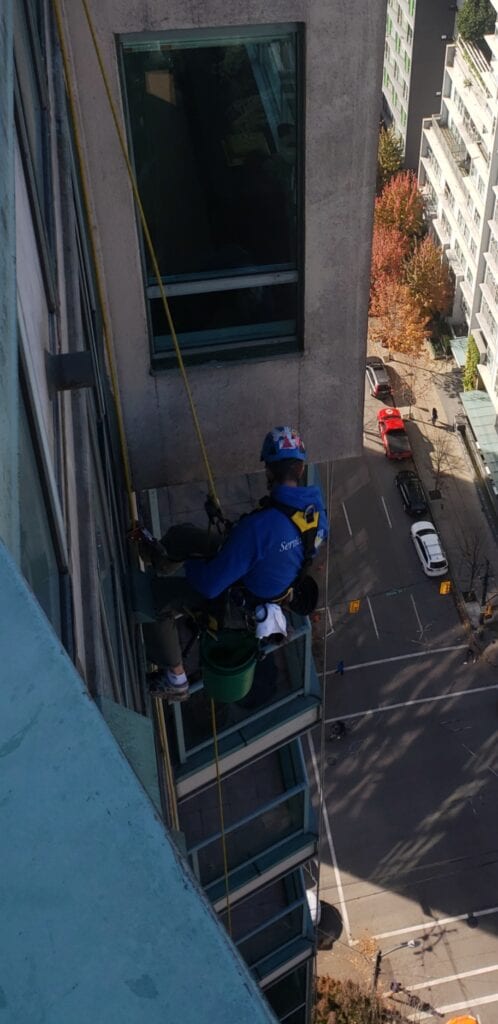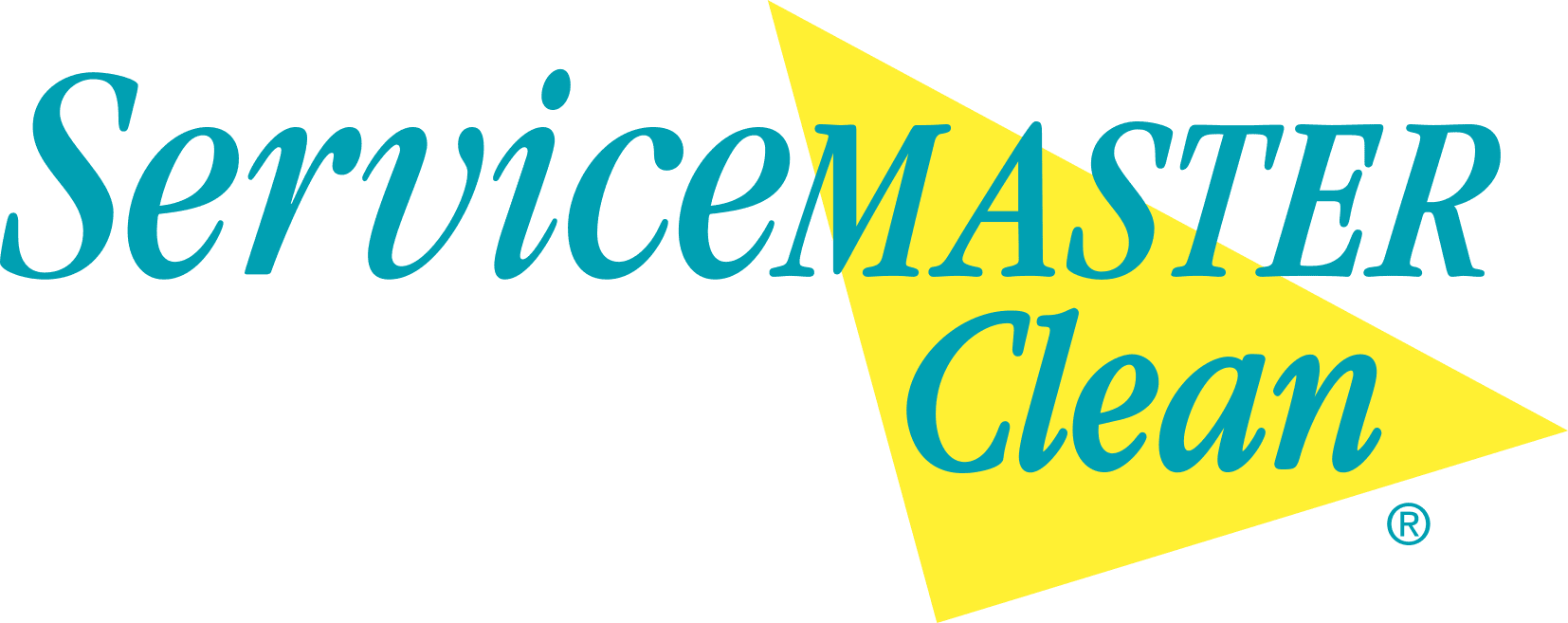Breaking the 300′ Barrier

Cleaning tall high-rise buildings has always been challenging, but once a building exceeds 300’ (approximately 30 stories) the situation becomes even more difficult, especially where no engineered swing stage has been permanently installed on the building. At these heights, the requirements for traditional access methods, such as bosun’s chair and swing stage, require specific engineering, as set out in WorkSafeBC regulations. Under these circumstances, an industrial rope access system might be more appropriate.
Bosun’s Chair
At heights over 300′, regulation 13.32 states that a “professional engineer must have certified in writing that the design, installation and proposed use of the swing stage, boatswain’s chair or portable powered platform, as the case may be, meets the requirements of CSA Standards”
When using a bosun’s chair, workers must also utilize a fall protection system that is anchored “independent of the work platform and its suspension system.” This usually means a vertical lifeline that extends from the roof anchors to the ground. But WorkSafeBC Guideline 11.5-2 advises that vertical lifelines over 300 ft require additional consideration “be given to factors such as the elasticity of the line and the effects of wind loading.” Pointing out that, “The longer the lifeline, the longer the total fall distance of a worker due to stretching of the line, with an increased risk that a worker may contact a hard surface before a fall is arrested”
Also, when working at heights above 25ft, OH&S regulation 11.3 requires a written fall protection plan. This fall protection plan must include a written rescue plan that is effective at rescuing a worker who is unable to self-rescue and this plan must be practiced annually. This can be potentially challenging without additional rope rescue training.
Rope Access
The alternative to classic bosun’s chair in these situations is an industrial rope access system as described under part 34 of the regulation. When using a rope access system work must be planned and directed by a level 3 SPRAT or IRATA rope access supervisor.
Although many of the above concerns regarding lifeline length and rescue still exist when using these systems, a rope access supervisor is considered sufficiently competent to manage the situation and mitigate any hazards, thus avoiding the need for an expensive engineering review. Furthermore, an industrial rope access supervisor is sufficiently qualified to rescue a worker from this height, without any additional training.
|
Bosun’s Chair
Rope Access
|
WorkSafeBC part 34 details requirements and certification standards accepted by WorkSafeBC for industrial rope access work, specifically mentioning both SPRAT and IRATA. Both of these systems incorporate strict standards for training, testing and certifying technicians to evaluate their competence. IRATA and SPRAT serve as certifying bodies for rope access technicians, ensuring a certain level of proficiency has been achieved. By contrast no recognized certifying body exists for bosun’s chair, or for the workplace rescue techniques required to retrieve a worker from such extreme heights. Because bosun’s chair work is not governed by a widely accepted certifying body, it is difficult for those hiring workers to determine their competence to perform the work.
By choosing a company that utilizes properly trained and supervised SPRAT or IRATA technicians you eliminate many of the concerns surrounding work at extreme heights. It is still important that you ensure there is an appropriately certified level 3 technician overseeing the work, and that they have the required staffing and paperwork in place, but beyond this there is much less guess work involved to ensure the work is being done safely.
More reading:
